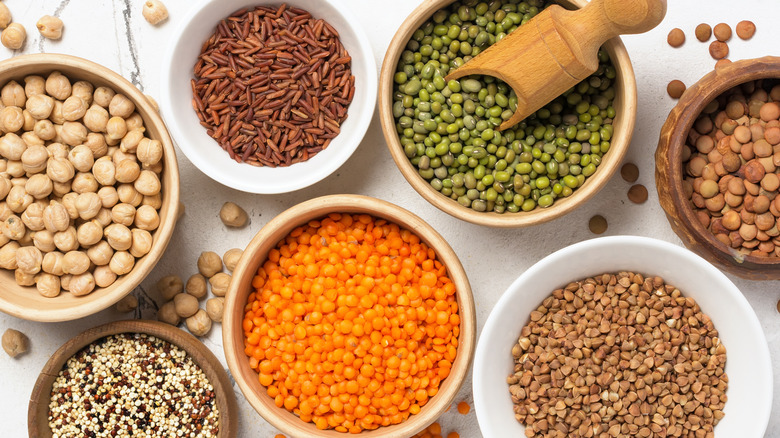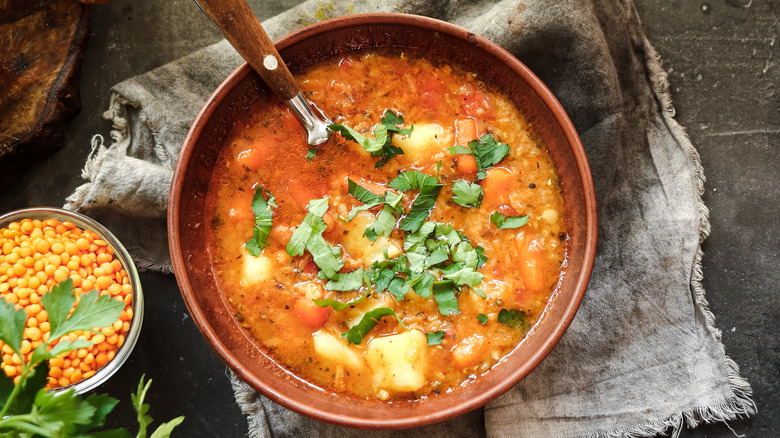For Creamier Results, Make Red Lentils Over Green
If you don't have a ton of experience cooking lentils, you may assume that the red ones are the only type out there, but there's actually at least seven different types of lentils, each with varying flavors and uses. Two of the most common varieties, red and green, are both plant-based sources of nutrition rich in protein, magnesium, and potassium. But if you want to compare taste and texture, there's a big difference between the two. Green lentils are firm and maintain their texture fairly well once cooked, while red lentils create a softer, creamier consistency in whatever dish they're in.
Why does this happen? Green lentils come with their skin intact and can take up to 45 minutes to fully cook. When they come off the stove, you'll find they still have a fairly firm texture. On the other hand, before you buy the red legumes found on grocery store shelves, they've typically been hulled and split, which means their skin has been removed and they've been cut in half. This also means they take less time to cook, since they're already partially broken down from the start. As such, they turn out much creamier once they're done.
How to cook with red lentils
While the texture between cooked red and green lentils is significantly different, that's not the only way these two legumes contrast. Red lentils have a sweeter and nuttier flavor than their counterparts, while green ones have a more peppery taste. As their names suggest, green lentils have an avocado green hue, while the red version appears a vibrant red-orange. And because of their differences in taste and texture, these two legumes are often used in very different ways.
Due to their mushy consistency, red lentils are typically used in soups, sauces, and curries. Besides adding their sweet flavor, they bring a thick, creamy texture to whatever you add them to. For example, they can turn a soup into a heartier version or act as a binder in vegan burgers once blended up. They are also a popular ingredient in Indian dals. After you puree red lentils in a blender, you can even make them into tortillas or pancakes. Green lentils are a much better option for tossing in salads since they'll maintain their shape. You can still add them to soups for a chunkier final product, but if you're looking for the creamiest result possible, stick to red lentils.

